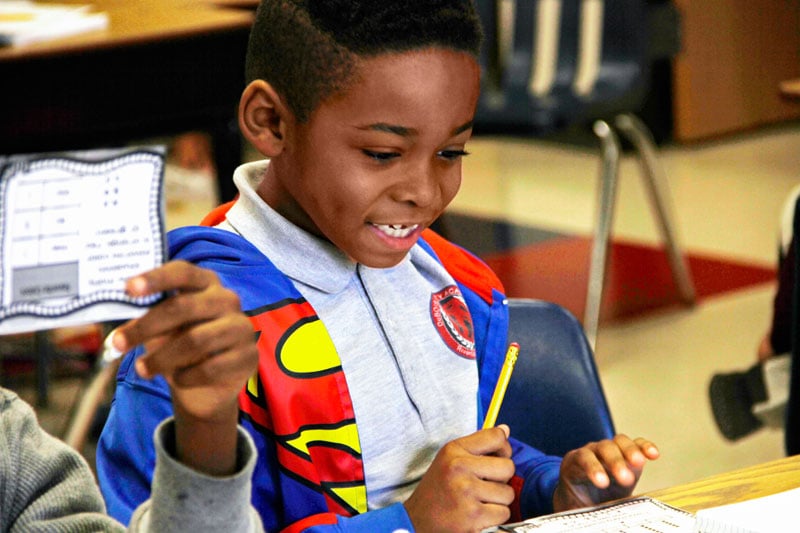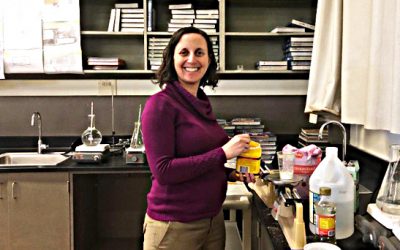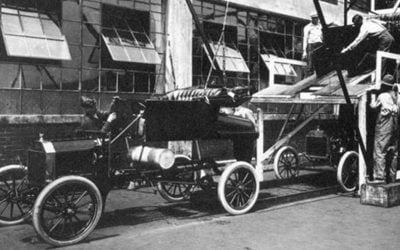Why do learning relationships matter?
I recently read an article in the New York Times about a viral Twitter hashtag created by Kyle Schwartz, a third grade teacher in Denver. The hashtag, #iwishmyteacherknew, grew out of an exercise she had created to help get to know her students better. In the exercise, she asked students what they wished she knew about them. As mentioned in the article, students shared personal details she would never have known otherwise, such as family health issues and favorite subjects. This heart warming story reminded me of how important it is for educators to deepen the learning relationships with their students and how this effort connects to academic achievement. For this month’s article, I wanted you to hear directly from “the field,” from one of the teachers PowerMyLearning has worked with, Elsbeth Grant, and about how she built stronger relationships with her students.
We know that strengthening the learning relationships among teachers, students, and families is vital to a student’s academic success. To write this piece, I contacted Elsbeth Grant, a teacher we worked with over two school years (fall of 2014 through spring of 2016) to hear about her experiences in the classroom and how she was able to develop strong relationships with her students. During that time, Elsbeth taught 6th grade Math at The Young Women’s Leadership School of the Bronx (TYWLS) – an all-girls school in the Bronx where almost 90% of the students qualify for free or reduced lunch.
Elsbeth described two important changes she made in her instruction, thanks to working with a PowerMyLearning coach on personalizing learning in her classroom, and how those two changes enabled her to improve her learning relationships with her students.
First, Elsbeth said personalizing learning in her classroom enabled her to improve the 1-on-1 time she had with her students. “Personalized learning gave me the freedom to differentiate my instruction for each student that needed help, without having to pull each one aside and dedicate a good amount of 1-on-1 time to re-teaching and checking for understanding. Now I could use technology resources, like PowerMyLearning Connect, to re-teach students the material in different ways (video, interactive questions, games), and then use my 1-on-1 time with students to check for deep understanding. This was a big change in terms of my 1-on-1 interventions with students – the amount of time I spent on re-teaching the material decreased while the quality of the time spent checking for understanding increased and enabled me to build stronger relationships with my students.”
Second, Elsbeth said that another feature of personalizing learning – using technology in her classroom – also greased the wheels for relationship development with her students. Elsbeth shared an example of this by telling a story about a former student, Tanika [her name has been changed for this story]. Elsbeth said, “Tanika was very unhappy to be at an all-girl school. She failed her first 3 or 4 math tests and was pretty despondent. Over time, I was able to get her engaged with the work because Tanika was really excited about working on the computer. And, by the end of the year, Tanika was passing her math tests! I have continued to follow up with her, and she has continued to do well in subsequent years. I’m so proud of her.”
I’d like to close with two things Elsbeth found surprising about working with PowerMyLearning. When chatting with Elsbeth, the two things she found most surprising were: (1) Her experience working with her PowerMyLearning coach felt like a true partnership. Elsbeth said, “My coach would draw from her own experiences and resources to help me improve. It was always a conversation, looking to help me get to the best solution together.” And (2) that her coach would sometimes recommend resources that were not on the PowerMyLearning platform, which was a sign that, “PowerMyLearning is focused on what is best for the teachers and the students, not on pushing a product.”
Elsbeth’s efforts help explain how TYWLS was able to beat a set of comparison schools on the state math test by 19% in terms of the change in the percentage of students scoring proficient from the 2013-14 school year (the baseline year) to the 2014-15 school year (the first year PowerMyLearning partnered with TYWLS). To see PowerMyLearning’s impact across a larger set of schools, see our Impact.


